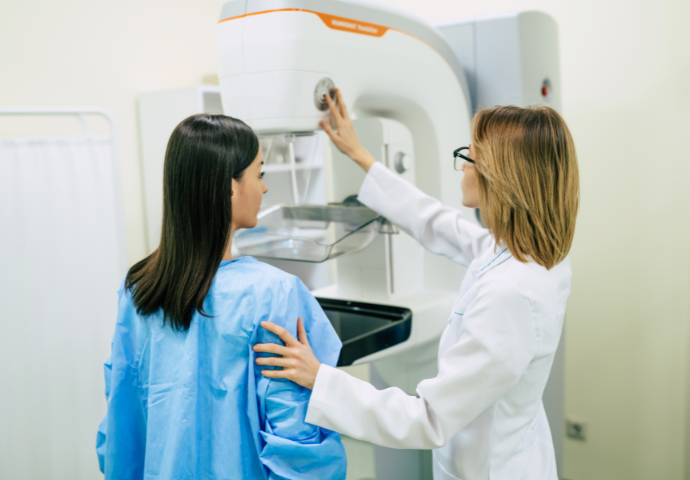Researchers from the Wellcome Sanger Institute and their collaborators focused on the ‘cancer protection’ gene RAD51C, known to increase ovarian cancer risk six-fold and risk of aggressive subtypes of breast cancer four-fold1. They found over 3,000 harmful genetic changes that could potentially disrupt its function and increase cancer risk. These findings were confirmed by analysing data from large-scale health databases.
The findings, published today (18 September) in Cell, are freely available so that they can be immediately used to help doctors and diagnostic laboratory scientists better assess cancer risk, especially for individuals with a family history of these cancers, reducing the uncertainty that often accompanies genetic testing.
The study also identified regions of the protein essential for its function, pointing to new roles in cancer development and potential therapeutic targets.
Breast cancer is the most common cancer in the UK, with around 56,800 new cases every year. One in seven UK females will be diagnosed with breast cancer in their lifetime2. Ovarian cancer is the sixth most common cancer in females in the UK, with around 7,500 new cases every year3.
The RAD51C gene encodes a protein crucial for DNA repair. Variants in this gene that stop the protein from working are known to increase the risk of breast and ovarian cancers and rarely, if there are two harmful gene changes are present, may result in Fanconi Anaemia, a severe genetic disorder4. Women with a faulty RAD51C gene face a 15 to 30 per cent lifetime risk of developing breast cancer and a 10 to 15 per cent risk of developing ovarian cancer5.
While genetic testing is common for individuals with a strong family history of cancer, the health impacts of most RAD51C variants were previously unknown. This uncertainty over cancer risk often leaves patients and doctors struggling to determine appropriate medical care moving forward.
In this new study, researchers from the Wellcome Sanger Institute and their collaborators set out to understand the effect of 9,188 unique changes in the RAD51C gene by artificially altering the genetic code of human cells grown in a dish, in a process known as ‘saturation genome editing’. They identified 3,094 of these variants that may disrupt the gene's function and increase cancer risk, with an accuracy above 99.9 per cent when compared to clinical data. Analysis of UK Biobank data and an ovarian cancer cohort of over 8,000 individuals further confirmed the link between these harmful RAD51C variants and cancer diagnoses.
By mapping the protein structure, the team also identified crucial surface areas of RAD51C essential for its DNA repair function. These regions may interact with other, yet-to-be-identified proteins or play a role in processes such as phosphorylation, offering valuable insights for drug development and potential new treatment targets.
The study also revealed the existence of ‘hypomorphic alleles’ – a type of variant that reduces the RAD51C gene's function without completely disabling it. These appear to be more common than previously thought and may significantly contribute to breast and ovarian cancer risk.
Rebeca Olvera-León, first author of the study at the Wellcome Sanger Institute, said: “This research demonstrates that genetic risk for breast and ovarian cancer isn't a simple yes-or-no scenario, but exists on a spectrum based on how genetic changes affect protein function. With a more comprehensive understanding of how RAD51C genetic variants contribute to cancer risk, this opens up new possibilities for more accurate risk prediction, prevention strategies, and potentially targeted therapies.”
Dr Andrew Waters, co-senior author of the study at the Wellcome Sanger Institute, said: “This work demonstrates the power of analysing genetic variants on a large scale within their genomic context. Not only can we understand how cancer-related DNA changes affect patients, helping with clinical decisions, but we can also explore how these variants impact the gene’s function at a detailed molecular level. This provides important insights into how proteins work and how genes evolve over time.”
Dr David Adams, co-senior author of the study at the Wellcome Sanger Institute, said: “The strong connection between harmful variants and cancer in large studies suggests that this approach to variant classification could be a valuable tool in personalised medicine and cancer prevention. We aim to extend this technique to many other genes, with the goal of covering the entire human genome in the next decade through the Atlas of Variant Effects.”
Professor Clare Turnbull, clinical lead of the study, Professor of Translational Cancer Genetics at The Institute of Cancer Research, London, and Consultant in Clinical Cancer Genetics at The Royal Marsden NHS Foundation, said: “These new data will be highly useful for diagnostic laboratories to better understand the RAD51C gene changes that we identify on clinical genetic testing in cancer patients and their family members. The assay data will help us to conclude which gene changes are harmful and which are innocent. This aids our decision making regarding which patients might benefit from offer of extra breast cancer screening and preventive surgery of the ovaries.”
Image: Povozniuk from Зображення користувача Maksym Povozniuk



